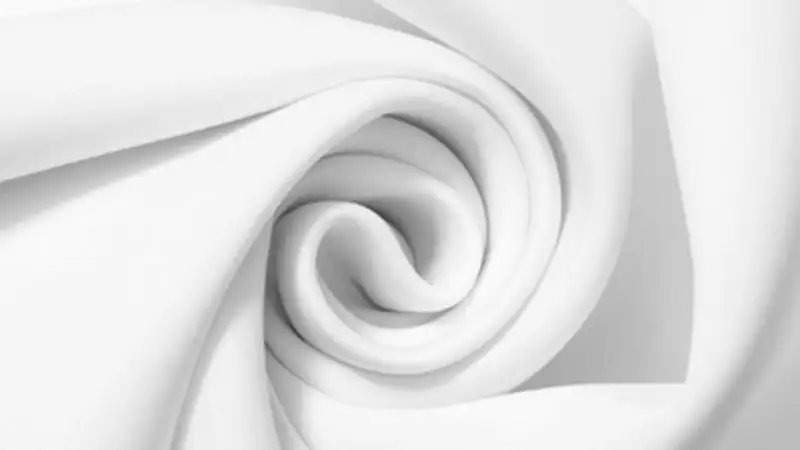In the field of textiles, scuba fabric is a high-quality item that is both flexible and durable, encouraging creativity and innovation in the process. It is often mistaken for its close relative neoprene, but scuba fabric has a unique build that makes it dense, stretchy, and holds its color for a long time. These qualities make scuba fabric the best choice whatever the style, be it clothing, or any other more modern home decoration projects. Just a little, and you will see that the material offers easy usage for the beginner, not to mention, the fact that it has the ability to maintain its shape and resist the really hard usage of it. To better understand how to incorporate scuba fabric into your projects, you can learn more about the diverse types available and how they can bring your creative visions to life.
Scuba fabric’s repute for constructing detailing silhouettes and offering substantial design support has made it a material of choice for both experienced designers and DIY fans. This model will help you to navigate around the most important aspects of this fabric, thereby the fabric’s origins, secondly, the defining properties, and how to effectively harness its potential across to the various applications. This information that the fabric gives you helps you to do a lot of things which is versatile and interesting.
Key Takeaways:
- Scuba fabric is ideal for projects requiring durability and a minimal appearance.
- Your crafting projects will highly benefit from its singular qualities as a sound technology user.
- Look at its different uses and care here as you do the steps in your fabric being the best.
Table of Contents:
- Understanding Scuba Fabric
- History and Evolution
- Core Characteristics
- Fashion Industry Applications
- Home Décor Innovations
- Advantages of Scuba Fabric
- Maintenance Tips
- Future Outlook and Trends
Understanding Scuba Fabric
Scuba fabric is a double-knit that displays a certain visual appearance and has a nice cushioned feel. The likeness of neoprene replenishes its allure in a wide range of formats, rendering the garment flexibility not achievable with most other textiles. Scuba fabric over the materials is quite efficient when it comes to being both a crisp look and a flexible texture that makes it fit a lot of ways. Despite it not being as thick as neoprene fabric, the hardness is still there which makes it creatively beautiful. This fabric is especially sought after by its fit in figure-hugging clothing. However, it also functions in various other areas, therefore being a multi-utility solution for design enthusiasts, no matter their skill level.
History and Evolution
The novelty of scuba fabric’s history is a whole new range of rags to newly-arisen voice concerns about, in this instance, fears over the start of the sun god’s seasonal travels, even as both of them had expectations of air conditioners. If evolution is as human, we have learned to control many other processes that we can also use to be more adaptable to the environment.
Core Characteristics
Scuba fabric made it possible to describe the basic features that make it an indispensable textile for designers. Usually, parts of the patch are made of polyester and spandex or lycra, but this doesn’t affect the durability or color of the fabric, which remains unchanged after many times of wearing or washing it. The fabric drapes in a sensible and lightweight way, and a structured silhouette is formed that doesn’t fall off and clings to the body of the wearer. Along with comfort, a slight stretch is also guaranteeing that the fabric fits snugly while still looking stylish. Also, the fabric’s natural resistance to pilling and creasing is indicative that it will indeed have a long-lasting, high-quality finish, which in turn will add value to it in fashion and interior design.
Fashion Industry Applications
Scuba fabric has been embraced in the fashion world for its ability to create innovative, eye-catching designs. Ideal for garments that require structure, it is widely used in skirts, dresses, blazers, and more. The fabric is especially appreciated in athleisure, where its flexibility and structure offer perfect support for an active, contemporary lifestyle. Designers cherish its vibrant color retention and strong silhouette support, which deliver practicality and elegance.
Home Décor Innovations
Scuba fabric is not just a darling in fashion; its strong, stylish characteristics lend themselves well to home décor applications. Upholstered furniture clad in scuba fabric boasts both durability and chic elegance. This material offers an outstanding solution for furniture frequently subjected to wear, without compromising aesthetics. In addition, using scuba fabric for curtains and cushions can transform a space, delivering a crisp, modern finish with a polished look. These attributes highlight the fabric’s ability to combine practicality with style, serving as a sophisticated choice for enhancing any interior environment. For anyone eager to explore creative uses within the home, scuba fabric presents an intriguing canvas for experimentation.
Advantages of Scuba Fabric
The compelling benefits of scuba fabric’s, from its straightforward upkeep to its adaptability, set it apart as a top choice for myriad applications. The synthetic fibers ensure it’s less likely to shrink or fade, enhancing its durability and the lifespan of completed projects. Designers and makers appreciate how its sturdiness complements artistic endeavors, allowing designs to maintain integrity over time. With its ease of care and ability to stay vibrant and new-looking, scuba fabric is an attractive option for those wishing to blend quality with innovation in their creative work.
Maintenance Tips
Maintaining scuba fabric requires a few simple practices to ensure its durability and aesthetic appeal. For best results, a gentle cycle with cold water should be used during washing to preserve its physical properties and prevent shrinkage. High temperatures can adversely affect the fabric’s fibers, so opt for air drying or using low-heat settings on a machine tumble dryer. Investing in additional resources like comprehensive synthetic fabric care guides can be invaluable, offering further advice on maximizing performance and longevity while caring for this versatile fabric.
Future Outlook and Trends
The future of scuba fabric holds promising avenues as brands and textile producers continue to innovate in line with eco-friendly practices. Sustainability remains at the forefront of these developments, emphasizing using recyclable materials and refining processes to decrease environmental impact while maintaining the fabric’s renowned features. This movement is part of a broader industry shift towards more responsible production, aligning with rising consumer consciousness about environmental issues. As these advancements occur, scuba fabric’s will likely expand their appeal as a multifaceted resource that embodies the balance between modernity, sustainability, and style. Designers and consumers alike will benefit from incorporating this fabric into their practices, enjoying its consistently delivered results. Contact us for more details, and visit our site.

